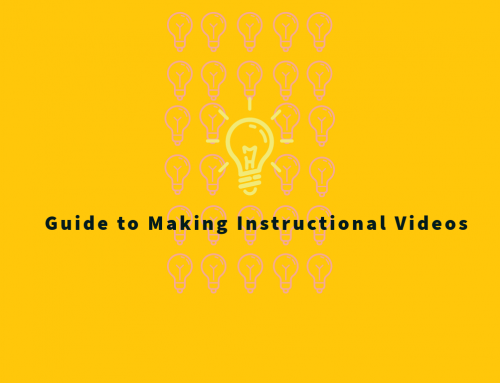Project Description
By Katrine Wong and Chris Fulton
Practical guidance for educators in higher education institutions who are designing blended learning courses is clearly described by Kathryn Linder in her book The Blended Course Design Workbook: A Practical Guide. That guidebook provides a very clear “…path to proper implementation and design of blended learning with integrity” (Kessler, 2018) and we have drawn on it extensively.
What is blended learning?
Blended learning environments are generally understood as a style of learning that combines face-to-face learning with online learning, wherein the two components complement each other. Most definitions agree that effective blended learning combines components of courses such as (a) space, e.g., face-to-face learning and online learning, (b) media, e.g., lectures and online media, and (c) pedagogy, e.g., active learning approaches and self-directed web-based instruction. Linder (2016) points out that definitions of blended environments can disagree on (d) time, e.g., whether online components of a blended course replace time previously allocated to face-to-face instruction.
Why blended learning?
Effectiveness
The impact of blended learning approaches on student learning outcomes may not be definitive, however, there appears to be evidence that shows students in blended learning environments perform better than those who attend traditional face-to-face environments (Kintu, Zhu & Kagambe, 2017).
Improved evaluations of teaching
Students have rated evaluations of teaching higher in flipped and blended courses (Samuel, 2019; Owston, York & Malhotra, 2019). Students’ satisfaction with courses that make use of active learning approaches could be due to greater opportunities for teacher and peer interaction. Another finding was that courses with online lectures allowed students to more carefully study and review content.
Implementing and designing blended learning
What are some of the key aspects to consider in designing blended courses?
Greater access to resources and increased flexibility
By organizing a blended environment using a learning management system (LMS), such as Moodle, students can have a more flexible and personalized learning experience. Successful blended learning courses provide well-structured course resources on an LMS, allowing student to review lectures as needed. In addition, students can access a variety of course resources online and respond using text, voice or media of their preference.
Increased opportunities for collaboration
Collaborative learning experiences between students can increase substantially in an online space. Collaborative tools such as online discussion forums, Word Online, and messaging tools are an integral part of our digital environments and can be used to facilitate collaboration. Online discussion forums, Darby & Lang claim (2019), should be a central element to include when designing courses as forums help students learn from one another and us.
Transparent communication
Effective and transparent communication between the instructor and large classes of students can be enhanced through our learning management system, UMMoodle. Communication tools, such as announcements and online discussions, ought to be used to disseminate important information, document communication for learners, and promote the exchange and transmission of ideas or feedback.
Pedagogical principles and activities
Designing learning activities and online video lectures for a blended classroom is best done by first thinking about learning outcomes. This approach to developing courses is known as backward design. Keeping learning outcomes in mind can help align learning activities and teaching practices with learning outcomes. In addition, connecting video lectures with exercises and activities, e.g. assignments, can help increase students’ positive perceptions of online video lectures (Ou et. al, 2016).
Faculty members are welcome to join upcoming events on blended or hybrid teaching. See the CTLE website for more current information.
Additional resources
- Quick Start Series on Hybrid Teaching: Meet-ups on Essential Tools and Strategies
- Centre for Teaching and Learning Enhancement Blog (UM)
- Guide to Blended and Distance Learning (NIU)
- Blended Learning Resources (Columbia)
References
Darby, F., & Lang, J. M. (2019). Small teaching online: Applying learning science in online classes. John Wiley & Sons.
Kessler, K. E. (2018). Implementing Blended Learning the Right Way: A Review of The Blended Course Design Workbook: A Practical Guide. eLearn, 2018(3). Retrieved from https://elearnmag.acm.org/archive.cfm?aid=3200483
Kintu, M. J., Zhu, C., & Kagambe, E. (2017). Blended learning effectiveness: the relationship between student characteristics, design features and outcomes. International Journal of Educational Technology in Higher Education, 14(1), 7.
Linder, K. E. (2016). The blended course design workbook: A practical guide. Stylus Publishing, LLC. Retrieved from https://ebookcentral.proquest.com/lib/umac/detail.action?docID=4741215
Ou, C., Goel, A. K., Joyner, D. A., & Haynes, D. F. (2016, April). Designing videos with pedagogical strategies: Online students’ perceptions of their effectiveness. In Proceedings of the Third (2016) ACM Conference on Learning@ Scale (pp. 141-144).
Owston, R., York, D. N., & Malhotra, T. (2019). Blended learning in large enrolment courses: Student perceptions across four different instructional models. Australasian Journal of Educational Technology, 35(5), 29-45. Retrieved from https://ajet.org.au/index.php/AJET/article/view/4310/1572
Samuel, M. L. (2019). Flipped pedagogy and student evaluations of teaching. Active Learning in Higher Education, 1469787419855188. Retrieved from https://journals.sagepub.com/doi/full/10.1177/1469787419855188


